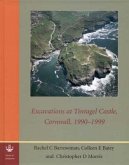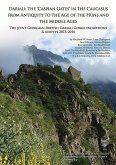Butrint 6 describes the excavations carried out on the Vrina Plain by the Butrint Foundation from 2002¿2007. Lying just to the south of the ancient port city of Butrint, these excavations have revealed a 1,300 year long story of a changing community that began in the 1st century AD, one which not only played its part in shaping the city of Butrint but also in how the city interacted and at times reacted to the changing political, economic and cultural situations occurring across the Mediterranean World over this period. Volume I discusses the results from the excavations, tracing the development of the area from an early Roman bridgehead suburb during the 1st and 2nd centuries AD to a major 3rd-century domus, one of the largest of its kind in the province of Epirus Vetus, its transformation into a new residential centre dominated by a Christian basilica in Late Antiquity, to becoming the home of a Byzantine archon during the 9th and 10th centuries when it was, in all but name, Butrint, and its subsequent uses following its abandonment due to the rising water table. This is followed by a description of the domus mosaics and a detailed examination of the basilica mosaics, analysing the imagery, meaning and context of this intricate and detailed pavement, together with discussions of the Vrina Plain and its place within the story of Butrint and the wider Mediterranean World during the Roman and Byzantine periods.








